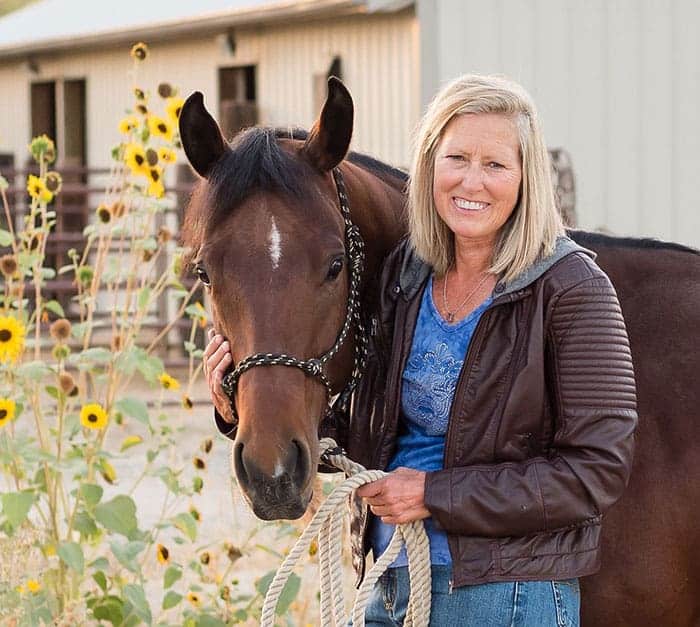Build an Outdoor Wash Rack
- Posted by Alayne Blickle

Outdoor wash racks are a super idea–a wonderful way to hose off or bathe your horse while allowing water to recharge the natural system. During the warm summer months it can provide extra bathing capacity for larger groups and it helps keep things from getting really get backed up with the single indoor wash stall.
With an outdoor wash rack, it is important to avoid allowing soapy, dirty water running directly into nearby water bodies such as a ditch, stream or wetlands–or from creating a muddy eyesore.
Here are a few key points to keep in mind for setting up your outdoor wash rack:
- Soil type: Outdoor wash racks require well-drained soils in order for them not to turn into a quagmire. Chose a spot with well-drained soil, because repeated use will quickly turn wet or organic soils into mud.
- Location: Choose a higher area (versus a low spot that will collect water and turn into a bathtub) away from creeks, ditches, wetlands, or other water bodies, as well as away from manure storage areas (so that water runoff doesn’t collect in manure storage).
- Chore efficiency: Your wash rack should be convenient to your barn or shelter area, as well as close to a faucet/water source.
- Size: This can vary from that of slightly larger than the footprint of a horse (approximately 10 feet x 4 feet) to that of a generous box stall (16 feet x 16 feet), or larger if you plan for bathing multiple horses at once.
- Footing: Crushed rock footing (no larger than 5/8 inch) 3 to 6 inches deep, improves drainage. Stall mats can be placed on top. You may wish to frame in the washrack area to hold footing and mats in place. Budget-wise tip: use recycled conveyor belting as mats.
- Cross-ties: I prefer having rails on sides so that horses are boxed in. This prevents horses from moving away from me when I spray them, plus I don’t want my horses to think they can turn around in the cross ties–a potentially dangerous situation.
- Materials: Cross-ties and rails can be made from any strong, sturdy, waterproof material such as railroad ties or welded pipe. Be sure corners are safe and there are no protruding objects where a horse could get hurt like bolt ends, nails, boards, or the tops of metal posts. Watch out for sharp corners and bottom edges.
- Buffer: Surround outdoor wash racks with vegetated areas. Healthy soil and plants break down contaminants and help prevent runoff.
- Optional: You might consider a shelf or basket along one side to hold shampoos, sweat scrapers, or other grooming tools.
Choose the products that you use in your wash rack carefully and look for organic products or shampoos made from biodegradable ingredients. Avoid chemicals, insecticides or anything else that could soak in and potentially contaminate the ground water
Create a free account with TheHorse.com to view this content.
TheHorse.com is home to thousands of free articles about horse health care. In order to access some of our exclusive free content, you must be signed into TheHorse.com.
Start your free account today!
Already have an account?
and continue reading.

Written by:
Alayne Blickle
Related Articles
Stay on top of the most recent Horse Health news with















4 Responses
re: Build an Outdoor Wash Rack
Nice wash rack! We did something very similar, only we put in a hitching rail rather than two posts for cross ties. It’s made of all 8-10" posts concreted 4′ in the ground so it doubles as a heavy duty tie-up area.
I find the conveyor belt
re: Build an Outdoor Wash Rack
We live on a tiered acre lot (SoCal), blessed to be able to have our horses, vehicles, etc., on our property, rather than paying board somewhere. My wash (and farrier location) is one of the tie rings on my horse trailer, the corner of which is positio
re: Build an Outdoor Wash Rack
I also like to bathe on a dry spot in my pasture. My day to day routine is to hose off immediately after I untack, no soap used. My horses are trained to stand quietly with the leadrope draped over their neck. I change spots before I create
re: Build an Outdoor Wash Rack
Excellent design. Right now though, we’re in the middle of a nasty drought, so I take my horses onto our buffalo grass lawn and wash them there. It’s so dry here that the only grass spots are where I’ve washed a horse.